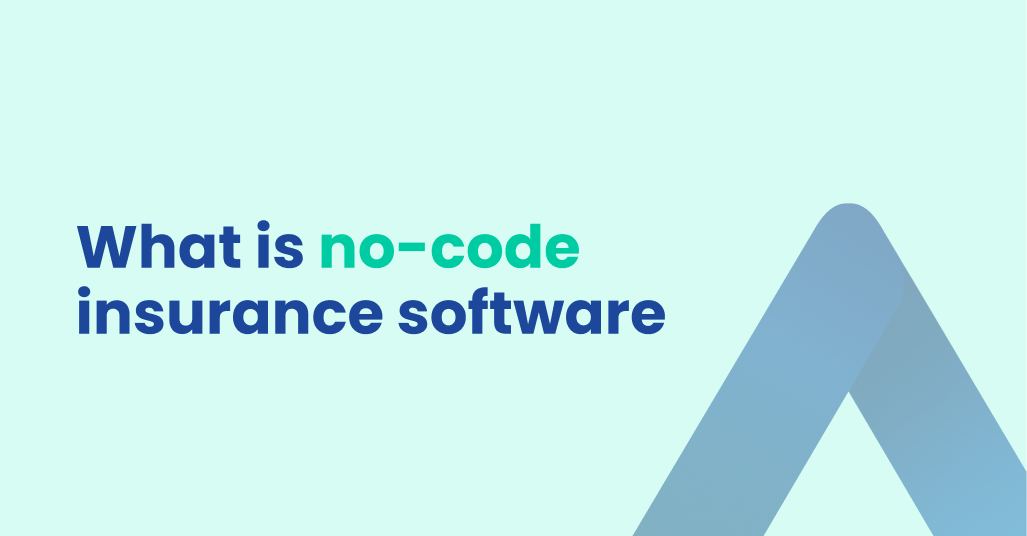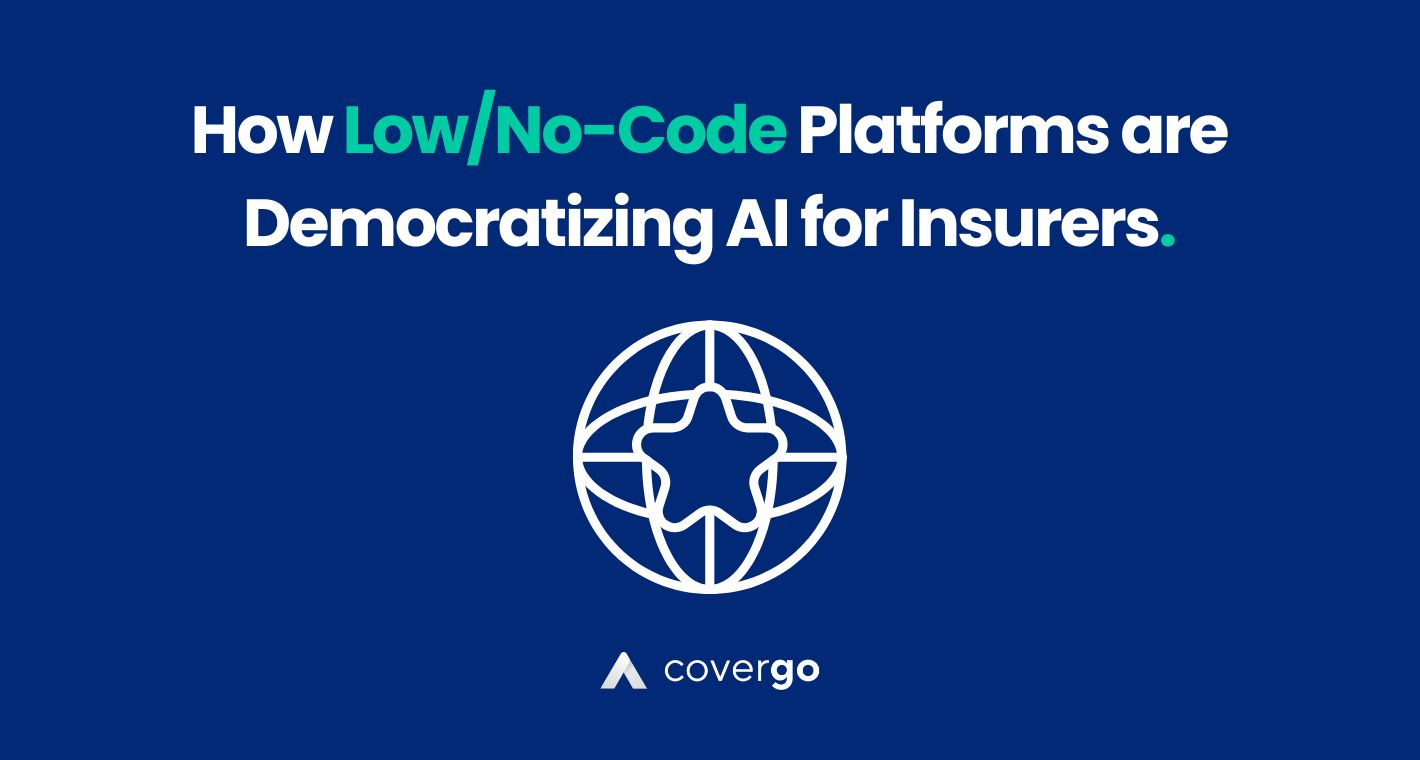Technological advancements have undoubtedly been a boon for insurance companies across the globe, thanks to easy access to state-of-art software for carrying out business. Yet, over-reliance on technology can sometimes reduce agility due to massive backlogs — when you have limited digital assets and endless requests flowing in, delays are inevitable. An easy way to cut down the heavy lifting necessary for developing unique insurance software is by adopting no-code software.
Here’s everything you need to know about no-code insurance software and what it means for the insurance industry at large:
What is no-code insurance software?
In simple terms, no-code software refers to any software that doesn’t rely on complicated coding for its development. Developers and non-developers can develop apps through simple drag-and-drop, even when not armed with specialized programming or software knowledge. In other words, the tool is specifically targeted toward non-professional developers — there is a code running the platform, but knowledge of coding is not essential for using it and creating apps.
No-code software architecture can be useful for several industries across the board. But in the case of insurance companies, it becomes even more important as business leaders are focused on finding out ways to create critical insurance products using minimal resources and in a cost-effective manner.
Given that the insurance industry is already branched out into various lines of business with its own processes, the need for having something customizable without much heavy lifting on the development side is urgent. While insurers want to move to a digital space, they are also risk-averse and don’t want to commit to anything that requires a substantial amount of money and time.
The rapid development of digital insurance, be it for raising claims, monitoring compliance, or underwriting, is only possible when no-code platforms are available that eliminate the need for understanding the technology behind the development.
The concept of no-code, however, is not brand new. It has been around for a few decades now. In Application Development Without Programmers, published in 1982, author James Martin spoke about a world where computers could exist without any programmers. The early 2000s witnessed further popularization of no-code technology with WordPress allowing users to create professional websites without any coding. Over time, newer digital products, such as email marketing and data analytics, established no-code as a near default option and sparked its popularity within the tech community.
Also important to note is the difference between no-code and low-code software, which is another popular product in the market. Low-code software is typically marketed to professional developers who lack coding expertise. As the name suggests, using low-code software might require the application of some coding skills.
Agility and Innovation is Pushing No-Code
For the longest time, the insurance sector has been quite slow to adapt to newer software. Customers in recent years however, have begun demanding a more digital approach thanks to the proliferation of smart mobile phones, the internet of things, and events like Covid-19 that put the squeeze on in-person meetings.
While digital demands sit waiting to be conquered, it’s also true that innovation isn’t completely lacking in the insurance industry. There are now wider, more customized, and varied types of insurance coverages that have been launched and innovated on at the core of most insurers. It’s simply because of a gap in customer-insurer experience caused by a lack of digital fluency.
So, insurers are busy innovating on their own products, but are struggling to launch those products fast enough to meet market demand.
IT teams get busy working on singular products, now there’s a backlog, and the capability to even invest in new software seems like a pipe-dream.
This is where no-code comes into play.
If an insurer can achieve the agility and innovate on their ability to launch, deliver, and manage their products, all without stuffing their IT team’s backlog, then clearly this means a second-wind for a lot of insurers is on the horizon.
Key benefits of adopting no code insurance software
Prior to the advent of no-code software, launching a new insurance product for insurers meant spending a sizeable amount of time. The lifecycle would consist of several stages, with the product manager initiating the request, followed by the business team identifying the gaps in the market and working on a business plan, and actuaries working on risk models. This would be followed by specialists working on underwriting and claims processes.
These cross-functional processes result in operational inefficiencies and make it challenging for insurers to truly address the needs of the customers and receive sustained engagement. No-code platforms like CoverGo make it possible for insurance companies to build and launch new products faster, regardless of the complexity. This helps them save both money and time. It also makes them more agile and allows for automation. As a consequence, businesses can scale their products at a faster pace since processes, products, or third-party system integration can be created without any formal coding knowledge.
The endless wait for product cycles for releasing simple applications can reduce productivity and also hamper the bottom line. Providing access to product innovation to those who directly deal with the customers can result in the swift development of better products that address the pain points. Moreover, digital insurers want to work on a platform that helps them to automate complex workflows, integrates easily with their existing systems, and allows them to build an omnichannel distribution front end, and no-code software is the perfect solution to meet all these needs.
Challenges with using no code insurance software
As is the case with any new technology, adopting no-code software requires a cultural change within insurance organizations. Insurers need to invest in learning and training to increase familiarity with such technology and come out of silos.
It is also important to remember that there is no one-size-fits-all solution, and business leaders should be open to the idea of experimenting with different platforms before they find the right one suited to their needs. Commercial standard insurance software has been in the market only for a few years. As a result, there are several off-the-shelf solutions to choose from.
Usually, the inability to add new features on account of integration issues and the availability of limited templates for creating apps hold back insurers. To reap the benefits of becoming truly digital, insurers need to opt for one that provides them a competitive advantage.
This is where CoverGo can make a difference. Our innovative no-code insurance platform is built to offer maximum flexibility. We are truly no-code and allow you to streamline all your processes, create a variety of products along with complete end-to-end integration, and build responsive front-end websites or client/agent portals without absolutely zero code.
Our platform is built keeping in mind the most novice developer with zero tech experience. Whether your product is a simple or a complex one, CoverGo supports it all. So get in touch today to schedule a demo.



